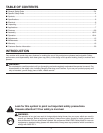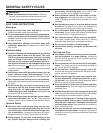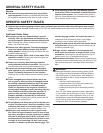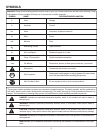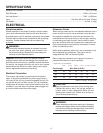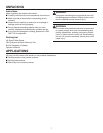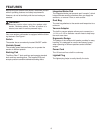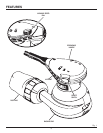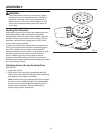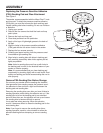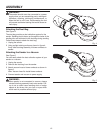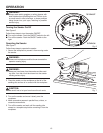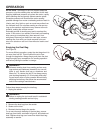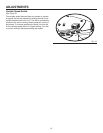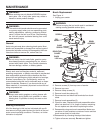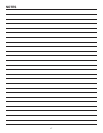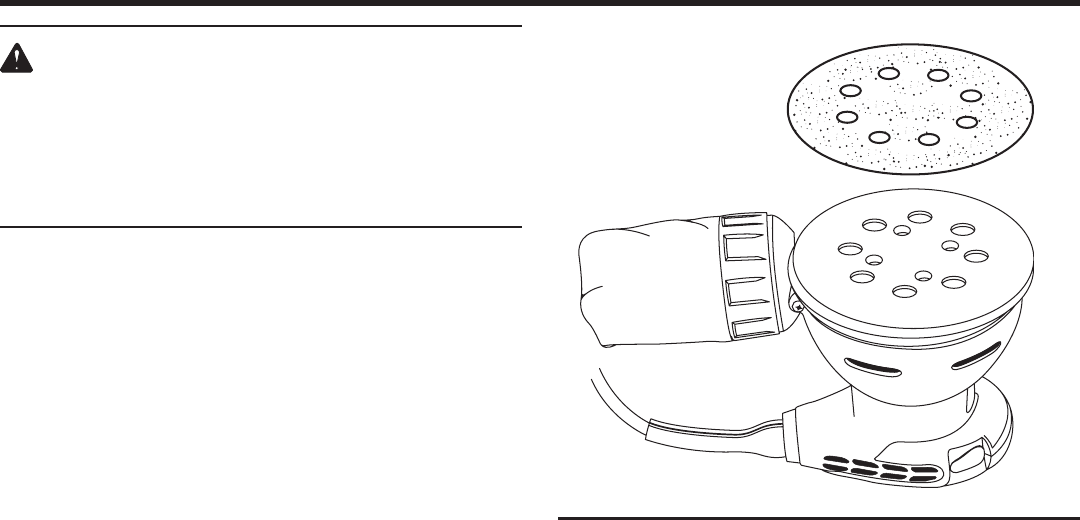
10
WARNING:
The sander should never be connected to a power
supply when you are assembling parts, making ad-
justments, cleaning, performing maintenance, or
when the tool is not in use. Disconnecting the tool
will prevent accidental starting that could cause se-
rious injury.
Sanding Disc Selection
Selecting the correct size grit and type sanding disc is an
extremely important step in achieving a high quality
sanded finish. Aluminum oxide, silicon carbide, and other
synthetic abrasives are best for power sanding. Natural
abrasives, such as flint and garnet are too soft for eco-
nomical use in power sanding.
In general, coarse grit will remove the most material and
finer grit will produce the best finish in all sanding opera-
tions. The condition of the surface to be sanded will
determine which grit will do the job. If the surface is rough,
start with a coarse grit and sand until the surface is
uniform. Medium grit may then be used to remove
scratches left by the coarser grit and finer grit used for
finishing of the surface. Always continue sanding with each
grit until surface is uniform.
Attaching Hook and Loop Sanding Discs
See Figure 2.
1. Unplug the sander.
2. Align holes in hook and loop type sanding disc with
holes in pad, then carefully press fuzzy side of sanding
disc against pad as tightly as possible.
Note: Hook and loop type sanding discs can be reused
for the life of the sanding abrasive. It is recommended
that you keep the sanding disc backing pad clean to
provide for best adhesion. Clean occasionally by
brushing lightly with a small brush.
ASSEMBLY
Fig. 2



